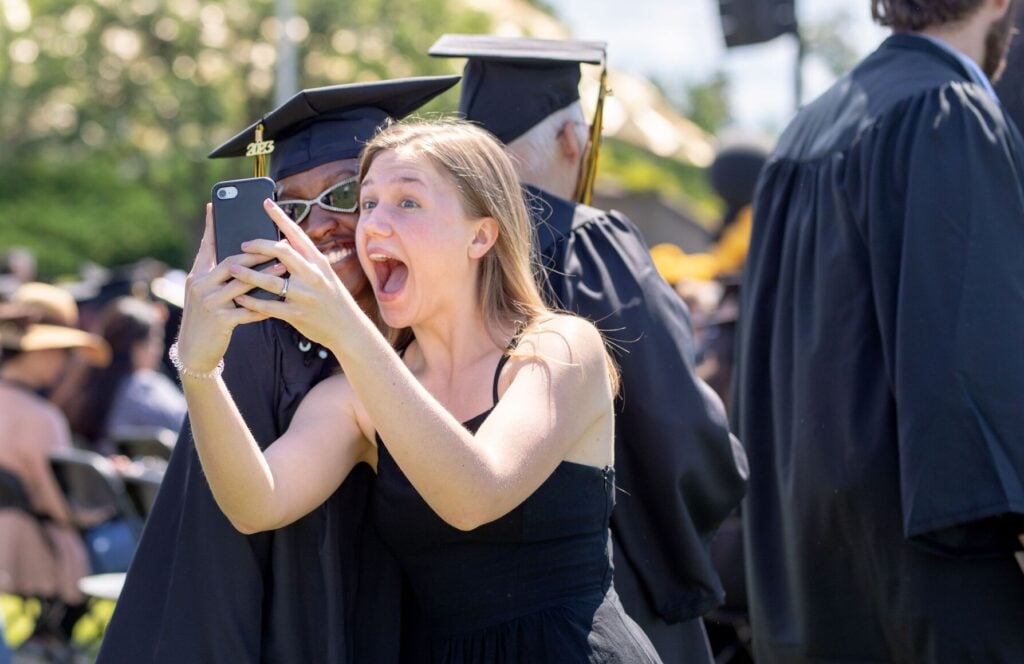In 2016 the Washington Roundtable, a group composed of major employers in our state, set an important goal: 70% of Washington students would achieve a post-secondary degree or credential by age 26. The number wasn’t arbitrary. It was based on data showing that at least 70% of the jobs in our state will be filled by workers who complete a postsecondary credential such as a college degree, workforce certificate or license.
Newly released data finds that our state is still far short of the goal. In fact, just 40% of the high school class of 2021 has achieved a postsecondary credential. That’s 3 percentage points lower than the class of 2019 and 30% behind the state goal.
While reasons for falling short can be blamed on disruptions that occurred during the pandemic, it’s also true that a healthy economy brings relatively high wages that lure many high school graduates to skip college and leap directly to a job. Regardless, it is still critical for our state to reach this goal.
Every employee of Walla Walla Community College is dedicated to making sure that learners of all ages in our region have access to college or post-secondary education and can fully benefit from its value over the long term. We know that one of the solutions is to make it possible for high school students to enroll in classes at our Walla Walla and Clarkston campuses. There’s no better way for high school students to explore their post-secondary options and earn college credits at a very low to zero cost, than participating in Running Start.
A state-sponsored program, Running Start allows 11th and 12th grade students to take college courses at any of the state’s 34 community and technical colleges and earn both high school and college credits for those courses. Running Start covers tuition, but it does not cover books and fees. However, depending upon family income, students may be eligible for a book and fee waiver.
This past spring, 18-year-old Vastiany Lara graduated from College Place High School and received an associate of arts degree from WWCC, including all of the prerequisites needed for the nursing program. Lara confesses that he originally applied for Running Start “because my friends were doing it.”
“It turned out to be a great decision,” he later said. “I’d say the best part of CC was the class sizes and how it was two free years of college.”
Now, with his AA and prerequisites in hand, Lara is enrolled this fall in WWCC’s Nursing Program.
This year, we expect approximately 300 high school students to enroll in classes at the Clarkston and Walla Walla campuses combined. In addition to taking classes that aren’t offered at their high schools and earning transferrable college credits, they also have access to the same support services that all WWCC students are afforded. That includes one-on-one academic advising, access to free tutoring, mental health counseling, and a myriad of other services.
These students will also have a greater chance of reaching their educational dreams. Research cited by the High School in College Alliance indicates students who participate in college in high school programs are more likely to graduate from high school, enroll in college, and ultimately, attain their degree or credential. Low-income and underrepresented students experienced the biggest positive impacts.
Jacky Alonso-Barrientos, Running Start coordinator on our Walla Walla campus, shares a story about a student who would be the first in his family to attend college. He was scared and wasn’t sure he could make it. He finished with a 3.9 grade-point average and moved from WWCC to the University of Washington with the confidence that he could not only make it, he could excel.
I encourage students, parents or any community members who want to find out more about Running Start to visit our website, WWCC Running Start, or give us a call at (509) 527-4262 (Walla Walla) or (509) 758-1700 (Clarkston).
I’d like to close by having Running Start student Vastiany Lara offer the final words.
“Running Start provides so many opportunities for disadvantaged high schoolers,” he said. “And it is great!”

